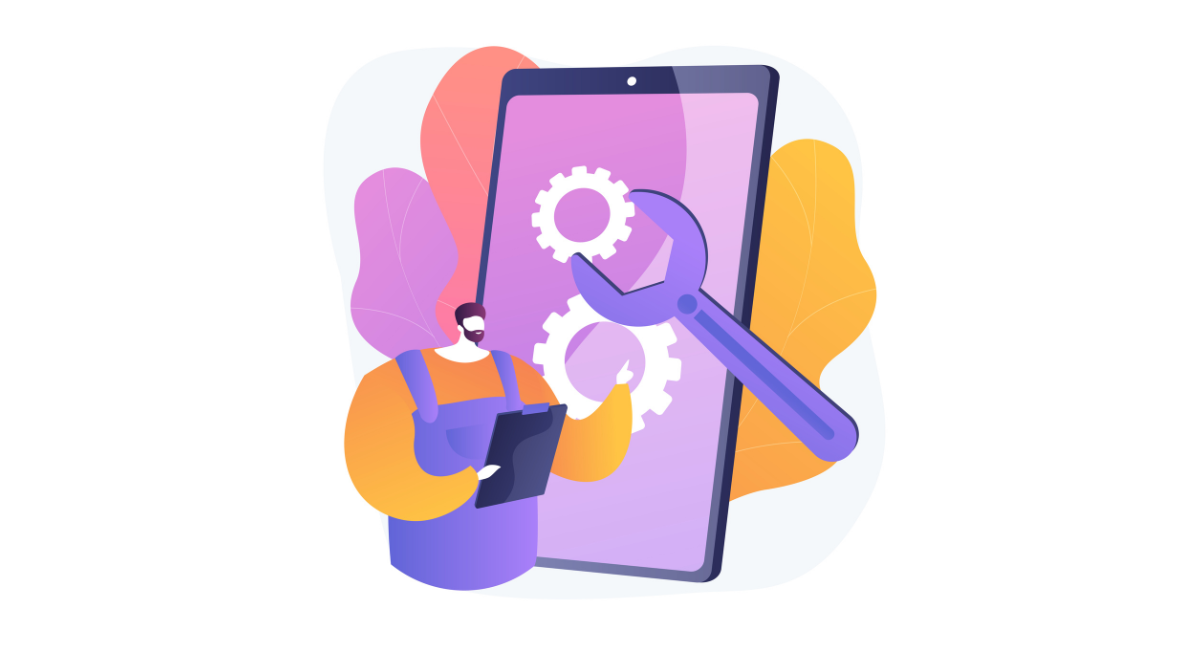Cannot be easily discounted is the role of mobile testing in the changing world of mobile. Nowadays, making something work seamlessly on different mobile devices and platforms is not just desirable but a compulsion.
The complete activity is known as mobile testing. It is an important facet of any mobile app to connect user experience and satisfaction directly, therefore reflecting on the success in the market.
Understanding What is Mobile testing?

Brief Overview of the Importance of Mobile Testing
Mobile testing helps resolve issues before they reach the user; it ensures that all functional, performance, and security features are covered from inside.
This would thus be very important to be able to deliver a robust application, one that can withstand varied expectations from different users and different device specifications as well.
Most importantly, periodic testing ensures that the quality of the app remains intact across updates and changes, providing a competitive advantage in this noisy market.
Therefore, mobile test strategies have to be developed right from the initial stages of developing an app so that eventually it ends well with the user and is successful.
Definition of mobile testing
Mobile testing is the process meant exclusively to check applications made for mobile devices and to ensure that applications work accordingly to the features, functionalities, usability, performance, and security testing, despite different devices with different operating systems and network environments.
The final goal of mobile testing is to provide a user bug-free experience while accepting hardware specifications with differences in their screen size, resolution, and internal configuration found in the device market.
Why mobile testing is necessary?
The necessity of mobile testing stems from the distinct and varied user environment mobile applications operate in.
Unlike desktop applications, mobile applications are accessed on multiple devices, each with different characteristics and performance capabilities.
Furthermore, these applications need to handle interruptions like incoming calls or network switching effectively, requiring robustness that can only be attained through meticulous mobile testing.
As mobiles become integral to daily activities, ensuring the reliability, user experience, and security through mobile testing is imperative to maintain customer satisfaction and business success.
Key Elements of Mobile Testing
Types of mobile testing
There exist two general classes of mobile testing: manual testing and automated testing. Several testing types can be further divided under each class:
- Functional Testing: Tests the function of an application.
- Usability Testing: The testing type evaluates the app's ease of use and user experience.
- Performance Testing: Tests on the application's responsiveness, stability, and resource usage.
- Compatibility Testing: This measures an app's performance on various devices, OS versions, and network environments.
- Security Testing: It detects the vulnerabilities of the application to take measures against any threats in the future.
- Localization Testing: Assures that the application is correctly localized to languages/regions.
Automated testing, performed using tools and scripts, facilitates the carrying out of repetitive tasks and proves to be of great help in certain cases, particularly in the case of Regression Testing and Load Testing.
Challenges of mobile testing
While this is very much a requirement, there are certain challenges that the testing of mobile applications brings to the table. These include the following:
- Device and OS fragmentation: With many mobile devices and operating system versions in the market, this becomes a huge headache to get compatibility across all combinations.
- Diversity of networks: Mobile apps might react differently to diverse network strengths and times; therefore, they require testing in numerous conditions on diverse networks.
- User Interface: Small screen sizes and varying resolutions demand stringent testing regarding the intuitiveness and access of the interface.
- Resource constraints: Mobile devices are constrained resources for battery life, processing power, and memory, which needs to be efficiently managed by the app.
This would, therefore, create the necessity for robust testing strategies and practices that ensure the standards expected of the mobile applications are met and further provide a hassle-free usability experience.
The Perfect Approach to Mobile Testing

Developing a mobile testing strategy
A good, solid development of mobile testing strategy has to start with identifying what your mobile application seeks to accomplish.
Identify the main functionalities and user interactions that your app provides; this is which the basis of your testing priorities will be laid.
Be clear about the platforms be it iOS, Android, or others and the devices your application will support, taking into account various screen sizes and hardware specifications.
Thus, good testing should not lack aspects in the areas of performance, usability, and security, among many others. Relate the variability of networks together with different installation environments to your testing plans in order to make the scenarios true life usage.
Finally, for an even more comprehensive strategy, continuous testing and integration should be planned to take place through all development lifecycles. That allows the issues to be tracked early, thus reducing time to market.
Best practices for mobile application testing
Below are some of the best practices for testing a mobile application that should be taken to assure effectiveness:
- Real Devices and Emulators: Emulation gives a good environment to start with, though testing on real devices gives insights into real situations in usability and functionality.
- Prioritize Device-Specific Testing: Pay attention to the most popular devices or operating systems that cater to your niche. In addition, consider hardware features used by your app.
- Automate Where Possible: Use automation for repeated and regression tasks to save your time and resources during the testing process.
- Focus on user experience: The application should be well-versed in terms of UI/UX testing, as great user experience is one of the major factors that will attribute to the application's success.
- Security Testing: The very nature of mobile applications takes them in close proximity to the sensitive data of its users; hence, mobile applications need thorough and adequate security testing to safeguard any vulnerabilities that might arise.
Importance of automation in mobile testing
As it saves a lot of time and labor on repetitive tasks, automation is very important in mobile testing. Automation tests, therefore, can execute at high speed and with great frequency; this is essential for continuous integration and delivery pipelines.
These will help track down any regression and other issues quite early in the development life cycle, which can reduce substantially the cost of flaws detected at a later stage of the development life cycle.
Moreover, automation can emulate a high volume of different user interactions and service conditions, enabling broad testing coverage hardly achievable manually.
Automated testing tools and frameworks in your mobile testing strategy not only optimize the testing process itself but also the general quality and resistance of the application.
Implementing Mobile Testing in Your Development Process
Integrating mobile test into the development lifecycle
Since many issues can be traced back to pretty minor problems at the beginning, incorporating mobile testing early and throughout the development lifecycle can ensure that these issues are identified and fixed before blowing out of proportion to big problems.
This shall be integrated right from the planning phase through all stages of development: design, implementation, and deployment. Continuous integration tools automate building, deploying, and running tests of the application.
This will go a long way in ensuring that the testing feels as continuous as possible and is greatly aligned with the development going on tandem to allow immediate feedback for iterative improvements based on test results.
Collaborating with developers for effective testing
Effective collaboration between testers and developers is pivotal in the mobile testing process. Encourage open communication and provide developers with clear, detailed feedback from the testing phases.
This collaboration helps in understanding the intent behind code changes and assists in identifying potential problems early. Moreover, it creates more robust and high-quality code, reducing bugs and enhancing functionality.
A collaborative model in which testers and developers work through agile sprinting can increase the efficiency and effectiveness of the test cycle multi-fold, hence going a long way to make the mobile application more viable and user-friendly.
Book a Demo and experience ContextQA testing tool in action with a complimentary, no-obligation session tailored to your business needs.
Conclusion
Recap of the importance of mobile testing
The reason for testing in the mobile space is to create applications that are ready to compete in the open market. An application should be reliable, user-friendly, safe, and enabled on disparate devices.
Structured testing strategies will help developers identify problems early in the development cycle and fix them using manual and automated approaches.
Such proactive measures will prevent release updates at a high cost and, more so, users' goodwill.
Final thoughts on achieving top-quality mobile applications through effective testing.
Achieving superior quality in mobile applications is directly linked to thorough and thoughtful testing protocols. By incorporating industry best practices and continuous testing throughout the development process, teams can minimize errors and enhance user satisfaction.
Effectively integrating new technologies like cloud-based testing and AI can further streamline the testing process. Remember, the goal of mobile testing is not just to find defects but to create a product that performs consistently well across all user segments and devices.
Also Read - What is QA Automation: Comprehensive Guide to Benefits and Challenges
We make it easy to get started with the ContextQA tool: Start Free Trial.
